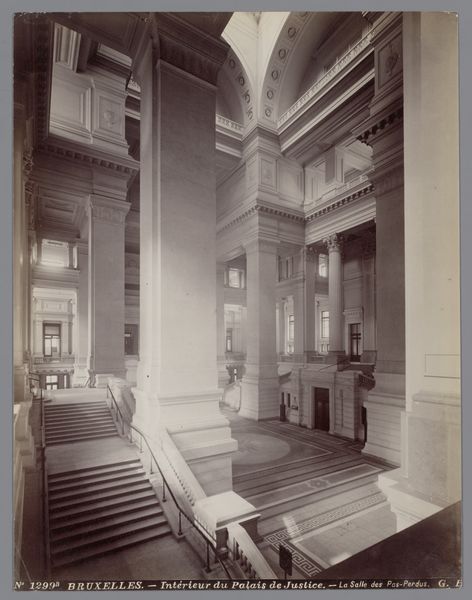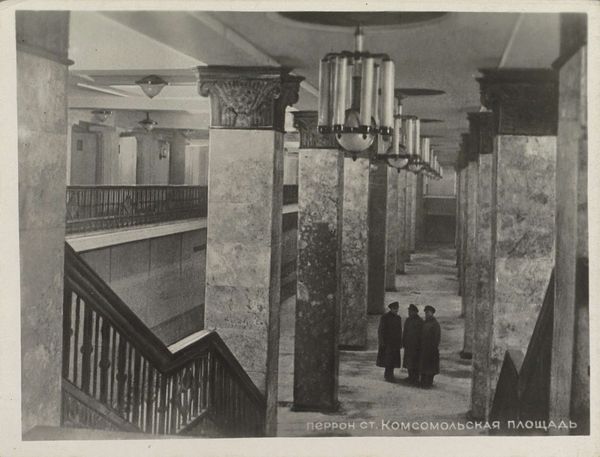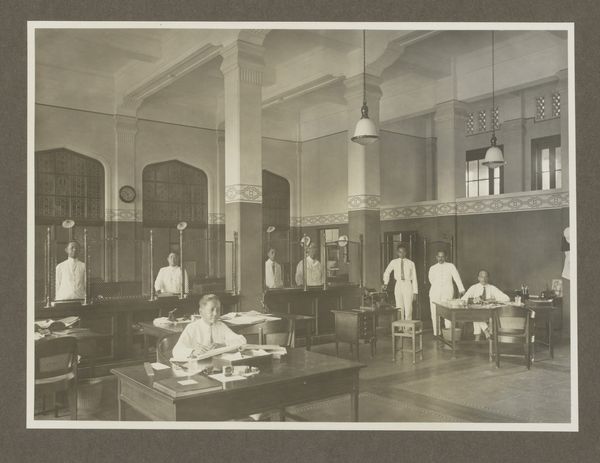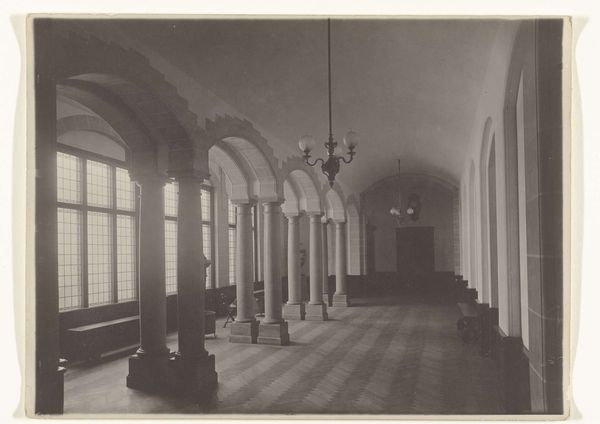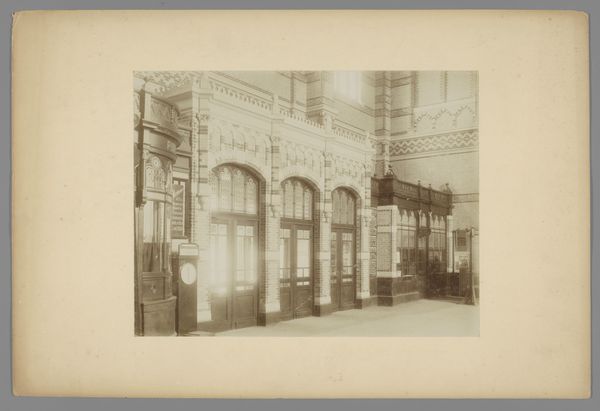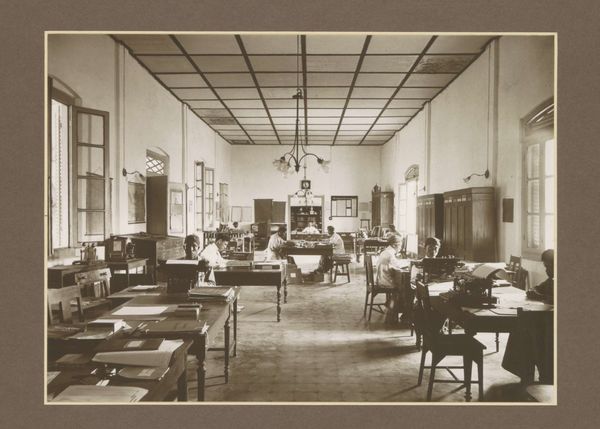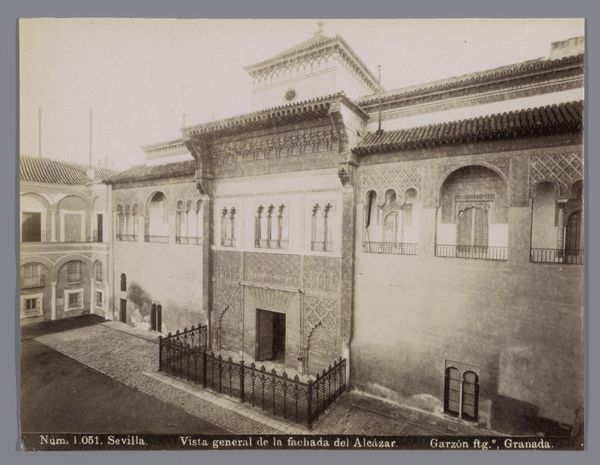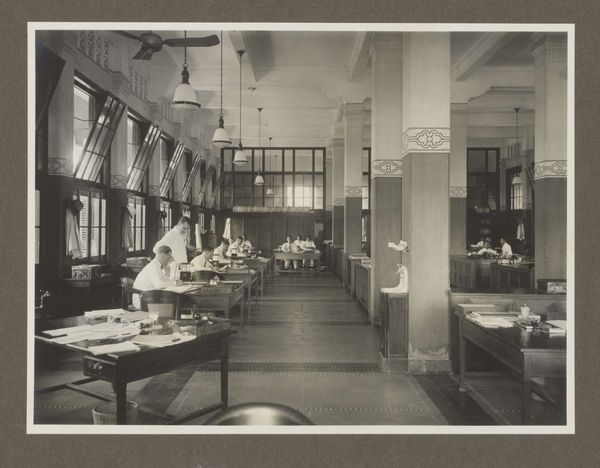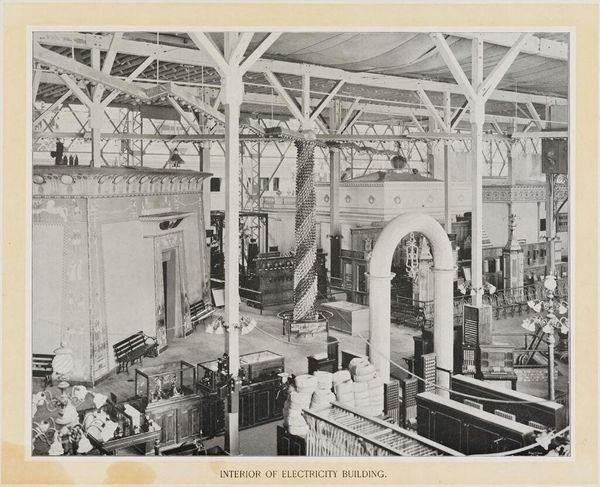
photography, architecture
#
photography
#
geometric
#
cityscape
#
modernism
#
architecture
Dimensions: height 170 mm, width 230 mm
Copyright: Rijks Museum: Open Domain
Curator: This is “Hall,” a photograph by Atelier Kurkdjian, created sometime between 1931 and 1934. Editor: My initial impression is one of cool formality. The stark black and white, the geometric tiling, the men in crisp white suits...it evokes a sense of institutional power. Curator: Exactly. The architectural style, deeply rooted in Modernism, showcases an era grappling with shifts in power. It’s not just the geometry; the cityscape elements invite discussions about urban planning and its intersection with early 20th-century ideologies. Considering it was produced in the 1930s, understanding the rise of nationalism, specifically in European contexts, is essential. The setting likely signifies specific historical connotations tied to institutions representing order and authority. Editor: The composition certainly directs our focus towards these visual narratives. Looking at the material reality of this photograph, though, makes me think about the resources consumed in such spaces – the marble, the etched glass, even the labor required to maintain this environment. How does that contribute to the meaning of this artwork? Curator: Those are powerful connections. Reflecting on the workforce visible in the image adds layers to the socio-political interpretations of it. It shifts towards broader inquiries about race, class, and gender during this period, which might otherwise go unaddressed. Editor: And what of the subjects depicted, though? Who do we see here, in their immaculate uniforms? Are they standing as signifiers of labor and function in such structures? Curator: Precisely! It beckons the consideration of the lived experiences within this space, how individual identity interacts with architectural intention, and its place in history. Editor: Ultimately, the image offers a way of critically seeing labor through a material, functional analysis. Curator: Right, by analyzing “Hall”, we reveal layers of intersecting power dynamics that shape meaning both then and now.
Comments
No comments
Be the first to comment and join the conversation on the ultimate creative platform.
